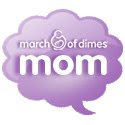Health insurance is always important however when your baby is in the NICU, it takes on even more importance. Our daughter’s hospital bill was well over $2 million and that doesn’t count doctor fees, procedures or specialists. Here are a few tips to think about now to hopefully save you some headaches later.\
Thirty day rule – once your baby is born you have 30 days to add him/her to your insurance policy. Thirty days may seem like a long time but when you’re worried about many other things that time can pass by quickly.
Double Coverage – if you have the option, have your baby put on the insurance policies for both parents. This will help reduce the costs you have to pay and ensure that your baby gets the most coverage available to him/her. Note: when a baby is covered by two insurance policies, primary insurance is based on the parent’s birthday month (i.e. if mom is born in March and dad is born in November, than mom’s insurance will be primary).
Review your policy – there are several key things to check on your policy:
- Lifetime cap – some insurance policies have a lifetime cap. Check and see what your coverage offers because your baby could easily surpass that just with his/her stay in the NICU.
- Coverage amounts – some insurance covers 100% of some things and then a percentage of other things. Find out what the coverage is in advance so that you can anticipate what you will have to pay.
- Deductible – some insurance policies come with a deductible. Make sure to check and budget accordingly.
Keep track of everything – I’ll discuss more tips for this in the near future. Basically, don’t throw out any paperwork because you don’t know when you will need it. Also, keep a phone log for every time you speak to a customer service agent – write down who you spoke to and when. This could become important if you have to appeal/challenge a decision.



 If you aren’t sure how much to eat in order to get the right amount of folate, check out this sample menu below. The menu was prepared by a registered dietician.
If you aren’t sure how much to eat in order to get the right amount of folate, check out this sample menu below. The menu was prepared by a registered dietician.






